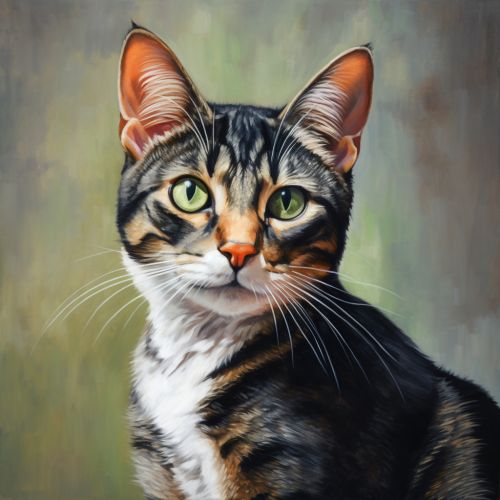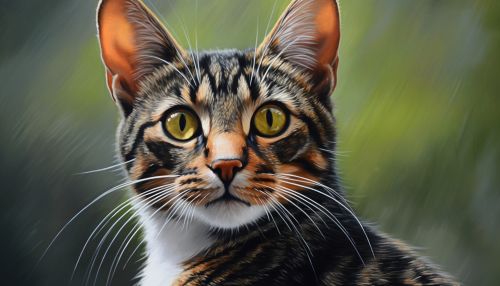Domestic Cat
Taxonomy and Evolution
The domestic cat (Felis catus) is a small carnivorous mammal that is often kept as a pet. It is a member of the family Felidae, which also includes lions, tigers, and other big cats. The domestic cat is believed to have evolved from the wildcat species Felis lybica, specifically the African subspecies F. l. lybica, around 9,500 years ago.
Characteristics
Domestic cats typically weigh between 4 and 5 kg (8.8 and 11.0 lb). They have a strong, flexible body with a quick reflexes. Their sharp retractable claws can be hidden inside their paws when not in use. Cats have a keen sense of hearing and sight, and their sense of smell is superior to humans. They can detect some odors in parts per trillion.


Behavior
Cats are known for their independent and aloof behavior. They are solitary hunters but are social animals that use a variety of vocalizations, purring, trilling, hissing, growling, and grunting, as well as body languages for communication. Cats also engage in play behavior, which is important for their physical and mental health and mimics hunting.
Diet
Cats are obligate carnivores, which means they require a diet of mainly meat. They cannot get all the nutrients they need from plant material. Cats require high amounts of protein, and a variety of other nutrients found in meat, including taurine, vitamin A, vitamin D, and arachidonic acid.
Health
Domestic cats are prone to a variety of health problems, some specific to cats, and others common among all pets. These include infectious diseases, parasites, injuries, and chronic disease such as kidney disease, hyperthyroidism, and dental disease. Regular veterinary care, including vaccinations and parasite control, is important to maintain a cat's health.
Breeding
Cats are seasonal breeders, with females typically coming into heat in the spring and autumn. Female cats can have two to three litters per year, with an average litter size of four to six kittens. Kittens are weaned at around eight weeks of age and reach sexual maturity at around six to nine months.
Domestication and Relationship with Humans
Cats were probably first domesticated in the Near East around 7500 BC. Archaeological evidence suggests that cats lived in close association with humans, and a study in 2007 found that all house cats are probably descended from a group of self-domesticating wildcats in the Near East around 8000 BC.
Cultural Depictions
Cats have been featured in the mythology and folklore of many cultures, including the ancient Egyptians, Norse, and Chinese. They are often associated with magic and witchcraft, due to their nocturnal habits and often mysterious demeanor. In modern times, cats are often featured in books, movies, and internet culture.
